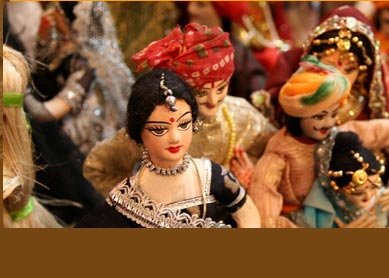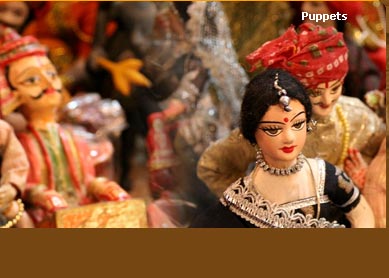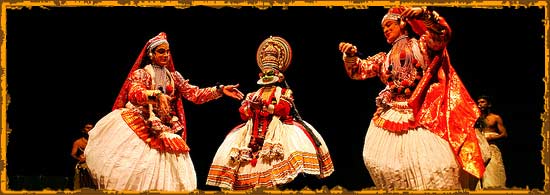

Performing Arts

Multifaceted culture and heritage of India, in true way,
is the biggest asset of the country which dates thousands years back to
period of earliest civilization. Blissfully, the country still preserves its
rich culture and heritage in various of its forms like arts, crafts,
religion, philosophy and tradition.
Performing arts, being the innate form of Indian culture and heritage, has been celebrated in the country for thousands years. Be it music, dance or theater, every form of performing art of India is known for its uniqueness and symbolise its age-old rich culture and tradition.
Must See & Do !
Music: Based on the principles of Nava Rasas (nine emotions – Love, Humour, Pathos, Anger, Heroism, Terror, Disgust, Wonder and Serenity) of Rishi Bharata, the Indian music tradition stresses upon treating Riyaj (musical practice) as devotion and worship. With the help of Raga, Tala and Shrutis, musicians evoke variety of feelings and moods before the audience. Today, divided in two strains, Carnatic (South Indian music tradition) and Hindustani (North Indian music tradition), the Indian music tradition has got its styles changed or innovated, but sustains its roots very beautifully.
Dance: Like music, traditional Indian dance form is also structured on the age-old Natya Shashtra, written around 200 AD by sage Bharata. Mythically adored Taandav dance of lord Shiva and widespread Devdasi dance constitute the solid base of rich dance form in the country. Several of popular classical dance forms like Bharatanatyam, Odissi, Kathakali, Kuchipudi, Manipuri, and folk dance forms like Bhangra, Bhavai, Jatra, Bihu and Santhali are today predominant part of various dance tradition of the country.
Theater: According to Natya Shashtra, origin of theater in India is a divine occurrence. The Nava Rasas (nine emotions), which are intrinsic part of the performance are meant to evoke live emotion and mood before spectators. Dance and music are two innate parts upon which success of a theatrical performance is based. Traditional theatrical performance in India deals with the dramatic representation of ancient rituals and festive occasions, which find deeper religious and spiritual significance.
Indian Culture
Performing arts, being the innate form of Indian culture and heritage, has been celebrated in the country for thousands years. Be it music, dance or theater, every form of performing art of India is known for its uniqueness and symbolise its age-old rich culture and tradition.
Must See & Do !
Music: Based on the principles of Nava Rasas (nine emotions – Love, Humour, Pathos, Anger, Heroism, Terror, Disgust, Wonder and Serenity) of Rishi Bharata, the Indian music tradition stresses upon treating Riyaj (musical practice) as devotion and worship. With the help of Raga, Tala and Shrutis, musicians evoke variety of feelings and moods before the audience. Today, divided in two strains, Carnatic (South Indian music tradition) and Hindustani (North Indian music tradition), the Indian music tradition has got its styles changed or innovated, but sustains its roots very beautifully.
Dance: Like music, traditional Indian dance form is also structured on the age-old Natya Shashtra, written around 200 AD by sage Bharata. Mythically adored Taandav dance of lord Shiva and widespread Devdasi dance constitute the solid base of rich dance form in the country. Several of popular classical dance forms like Bharatanatyam, Odissi, Kathakali, Kuchipudi, Manipuri, and folk dance forms like Bhangra, Bhavai, Jatra, Bihu and Santhali are today predominant part of various dance tradition of the country.
Theater: According to Natya Shashtra, origin of theater in India is a divine occurrence. The Nava Rasas (nine emotions), which are intrinsic part of the performance are meant to evoke live emotion and mood before spectators. Dance and music are two innate parts upon which success of a theatrical performance is based. Traditional theatrical performance in India deals with the dramatic representation of ancient rituals and festive occasions, which find deeper religious and spiritual significance.
Indian Culture

